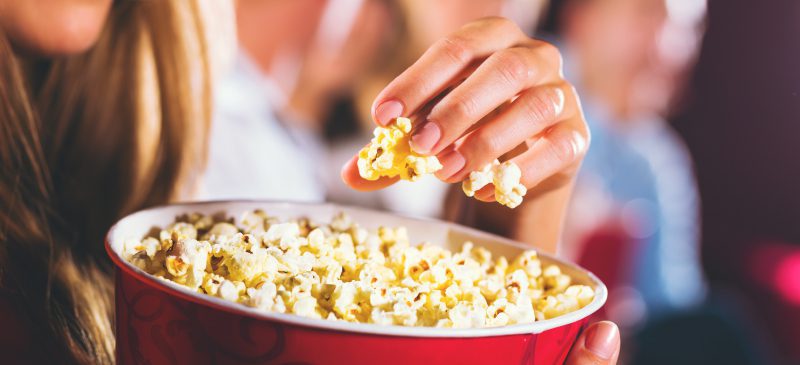Portion Sizes: A Modern Challenge
Health researchers widely concur: While multiple factors contribute to the obesity epidemic we’ve witnessed in recent decades, one significant culprit stands out—the dramatic expansion of portion sizes.
This trend affects both meals prepared at home and dining experiences outside the household. However, our increasing tendency to eat out regularly has become particularly problematic for waistlines across America.
In today’s society, we frequently consume what nutritionists term “high energy density foods”—items like fast food, deep-fried dishes, and nutritionally empty calories found in sodas, French fries, and refined carbohydrates such as white bread and pasta.
Research consistently shows that both youngsters and adults will consume more food simply when larger amounts are presented—a behavioral pattern researchers have dubbed the “portion size effect.”
Understanding serving sizes and recognizing environmental eating cues has become crucial in addressing weight management and combating widespread obesity.
The surprising reality? Our body’s internal fullness detectors are remarkably easy to override. Especially over time, our appetite responds more strongly to external cues—visual presentation, flavor, texture, and aroma—than to internal regulatory systems.
Among these sensory influences, the visual impact of what’s placed before us most powerfully determines our ultimate food intake.
Have our serving sizes always been this large? Are there effective strategies to counteract the portion size effect? Let’s explore these questions further.
The Evolution of Portion Sizes
The expansion of food portions isn’t merely a contemporary phenomenon—researchers analyzing 52 paintings of The Last Supper created across nine centuries (1000-1900 AD) discovered that the depicted main dishes and bread portions grew considerably over time, with a notable increase occurring after 1500.
Around the 1970s, serving sizes began expanding unprecedentedly for most food items and restaurant offerings. This growth accelerated dramatically during the 1980s and has continued its upward trajectory alongside the rising average weight of the American population.
By the early 2000s, numerous everyday food items featured serving sizes that deviated substantially from what the United States Department of Agriculture (USDA) considered a standard portion. Many products routinely presented serving sizes exceeding the official standards established by the USDA and the Food and Drug Administration (FDA).
These misleading portion representations appeared across various food categories, creating significant discrepancies between recommended nutritional guidelines and actual consumption patterns.
The Supersizing of America
A comprehensive review from 2002 highlighted a dramatic shift in food marketing and consumption patterns:
Food companies now leverage larger sizes as key selling points (like Double Gulp and Supersize options), while fast-food establishments actively promote oversized items through various marketing materials. Even manufacturers of diet-focused meals advertise increased portion sizes, and restaurant critics routinely praise generous servings.
National restaurant chains prominently feature more extensive options directly on their menus. The food service industry has adapted accordingly—restaurants use wider dinner plates, bakeries sell larger muffin tins, pizzerias employ bigger pans, and fast-food vendors provide more substantial drink and french fry containers.
Interestingly, identical recipes in different editions of classic cookbooks like Joy of Cooking now specify fewer servings, indicating an expectation of more significant individual portions.
The trend extends beyond food establishments—car manufacturers have redesigned cup holders in newer models to accommodate increasingly larger beverage containers. Our observations confirm that portions of all ready-to-consume foods and beverages have expanded significantly, becoming the new normal.
The increasing tendency to dine away from home has further complicated matters. While Americans consumed approximately 23 percent of their calories outside the home in 1977, this figure jumped to nearly 34 percent by 2006.
Though an eleven percentage point increase might seem modest, its impact is substantial when considering that many affordable and chain restaurants routinely serve meals significantly exceeding recommended portion sizes.
This discrepancy between standard nutritional guidelines and actual serving sizes creates a considerable caloric surplus in the American diet.
10 Strategic Ways to Outsmart Your Brain and Reduce Food Intake
How can you effectively train your mind to consume less food—or increase your intake of nutrient-rich, calorie-light options that promote overall health?
While I’ll share several practical strategies below, the foundation of successful portion control lies in mindful eating practices. Reducing your food consumption requires intentional awareness, which demands both time and consistent effort.
Master Your Portions
It may seem obvious, but the fundamental way to consume less is to… deliberately eat less!
Don’t rely on intuition alone when serving yourself. This is especially important when preparing meals at home, visiting buffets, or serving food to children. Check packaging or quickly research appropriate serving sizes online.
If packaging indicates a serving is one-third of the container, resist finishing the entire package. Both adults and children naturally consume more when presented with larger portions—a clear example of how our bodies sometimes fail at self-regulation, even with foods we don’t particularly enjoy.
Since restaurants often make portion control challenging, begin your dining experience by implementing the next strategy…
Scrutinize Nutritional Information
Restaurants can help reduce customer consumption by displaying calorie counts on menus, especially when accompanied by daily calorie guidelines (typically 2,000 calories/day).
Overweight individuals tend to underestimate calorie content in larger meals, particularly fast food options (which are best avoided altogether).
If nutritional information isn’t visible, search online—most major restaurants provide this data on their websites or upon request.
When confronted with high-calorie meals (personally, I become cautious when seeing anything above 700-800 calories per serving), implement portion control before your first bite. Request a take-home container and set aside 30-50% of your meal immediately to remove the visual cue encouraging overconsumption.
While grocery shopping, examining nutrition labels helps avoid excessively caloric foods and potentially harmful ingredients.
Dine in Well-Lit Environments
Romantic candlelit dinners may charm your date but often lead to higher calorie intake. In one experiment, participants eating in complete darkness consumed 36% more food than those dining in well-lit conditions—with no physical signals indicating fullness or suggesting they should skip dessert.
Rather than eating in a darkened room before your television, practice mindful consumption by sitting at a properly lit table focusing entirely on your meal, saving entertainment for afterward.
In dimly lit restaurants, remain vigilant about appropriate portion sizes.
Approach Snacking Mindfully
While packaging generally deserves our trust, many “individually packaged” snacks contain larger-than-necessary portions.
You’ll likely consume more of a snack when a “single serving” comes in a larger size or container—a phenomenon psychologists call “unit bias.” Our brains perceive single items as equivalent regardless of size differences.
When offered five mini pretzels versus five standard-sized ones, most people will consume the entire serving of either option, meaning those eating the larger pretzels ingest more calories.
Don’t let packaging tricks deceive you. Take time to measure proper serving sizes and avoid eating directly from large containers like chip bags.
This naturally leads to my next recommendation…
Embrace Meal Planning
Portioning snacks into individual bags effectively controls consumption, but this principle extends beyond snack foods.
When you invest time in meal planning and bulk preparation, you significantly improve your ability to prevent overeating.
Through proper meal planning, you can comfortably finish everything on your plate without guilt. Most people decide whether to clean their plate before taking their first bite—by preparing appropriately sized meals in advance, you practice delayed consumption decisions and ultimately reduce your total food intake.
Consume Protein Before Dining Out
Perhaps appetizers serve a valuable purpose after all. Eating something small before your main meal can reduce your appetite when the primary course arrives.
This effect is particularly pronounced when your pre-meal contains substantial protein.
Smart high-protein snack options to keep handy, especially before visiting restaurants with oversized portions, include protein bars, black bean brownies, chia pudding, and guacamole-stuffed eggs.
Prioritize Vegetables
Want to trick yourself into consuming more nutritious foods? Add abundant vegetables to your plate and eat them first.
While this might not reduce your consumption of other foods, you’ll increase your intake of the healthiest items simply by serving them first and making them prominent on your plate.
This strategy works effectively for both children and adults.
Keep Second Helpings at a Distance
I’m not suggesting laziness influences your eating habits, but placing additional servings on the stove rather than directly on the dining table typically results in reduced consumption.
Research found a 35% decrease in food intake when additional servings remained out of arm’s reach, with slightly stronger effects observed in men.
Recognize Labeling Manipulation
An “organic” label doesn’t automatically indicate lower calories or greater healthfulness.
While choosing organic options helps avoid potentially harmful chemicals, don’t let such labeling mislead your nutritional judgment. Organic cookies, for instance, typically contain significant sugar content.
Research shows people not only consume more foods labeled organic (regardless of actual nutritional value) but many subjects even abandoned other weight management efforts, like exercise, after eating organic products.
Train yourself to evaluate the actual nutritional profile of foods, regardless of organic certification, and maintain beneficial lifestyle practices like regular exercise.
Use Smaller Dinnerware
You’ve likely encountered this recommendation before, but using smaller plates and serving pieces effectively reduces consumption.
A small plate simply cannot accommodate the same quantity as a large one, and seeing a “full” plate satisfies psychological needs even with fewer calories present.
Between the 1980s and 2000s, average dinner plate size in the United States expanded by an astonishing 44%, reflecting our growing acceptance of larger portions.
Interestingly, less than half of participants in one study even noticed when served identical food portions on differently sized dishes.
Another study found people consumed more snack foods when self-serving with larger spoons.
You’re also more likely to drink larger quantities from tall, narrow containers than from short, wide ones.
The solution is straightforward—be conscious of your dinnerware size and adjust accordingly (while implementing the other strategies above) to prevent overconsumption.
Final Perspective
While portion sizes have expanded dramatically since the 1970s, paralleling increasing average weights among Americans, focusing obsessively on calorie counts may prove counterproductive.
Rather than fixating on numerical values, concentrate on consuming nutrient-dense foods while maintaining portion awareness. This approach better addresses concerns about how portion sizes contribute to obesity, particularly regarding high-calorie, nutrient-poor options.
The strategies outlined above can effectively help manage consumption without requiring calorie obsession. Instead, emphasize nutritional quality by incorporating superfoods and other high-value items into your diet.
The nutrients these foods provide support overall health—not just weight management.










